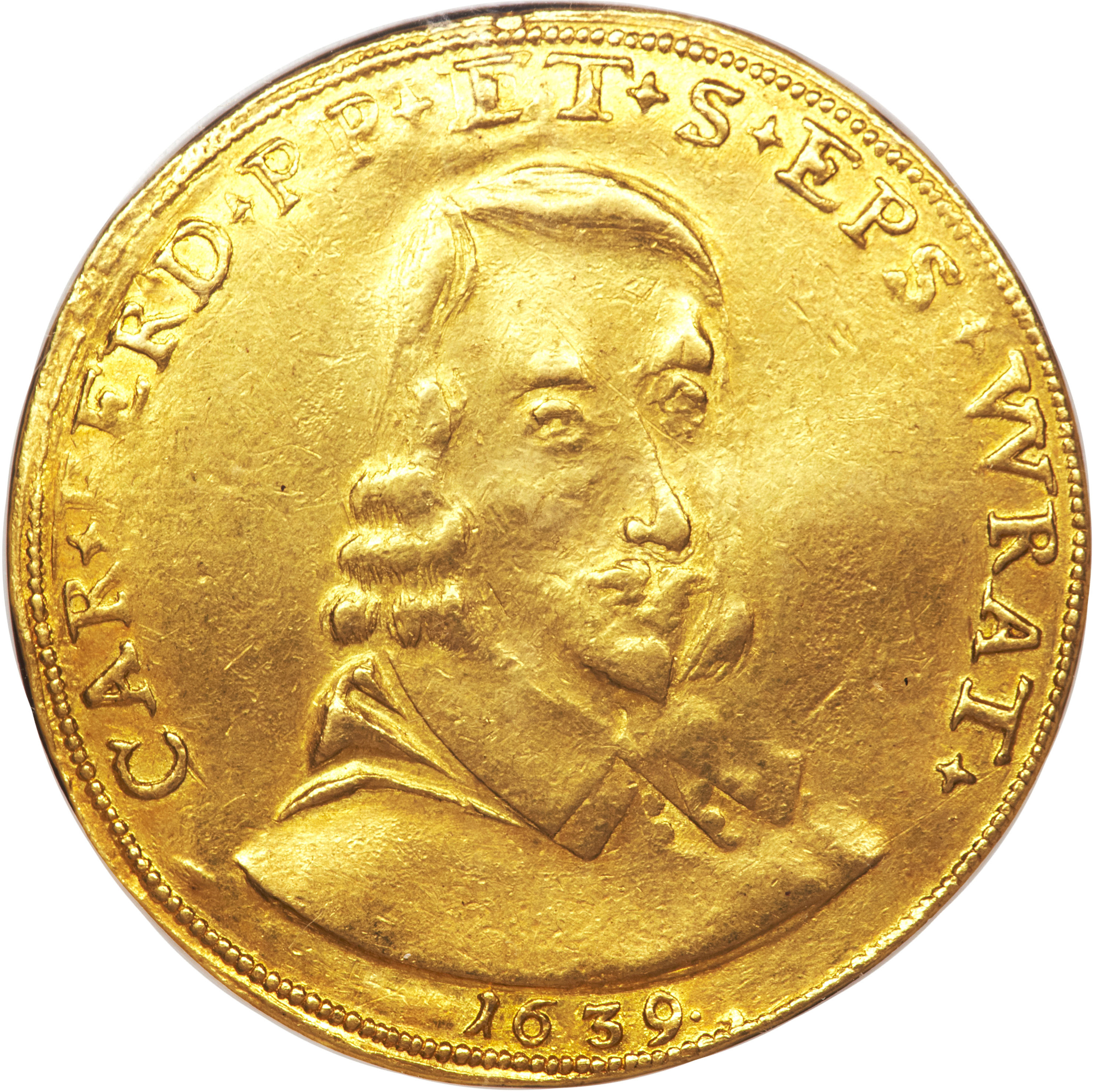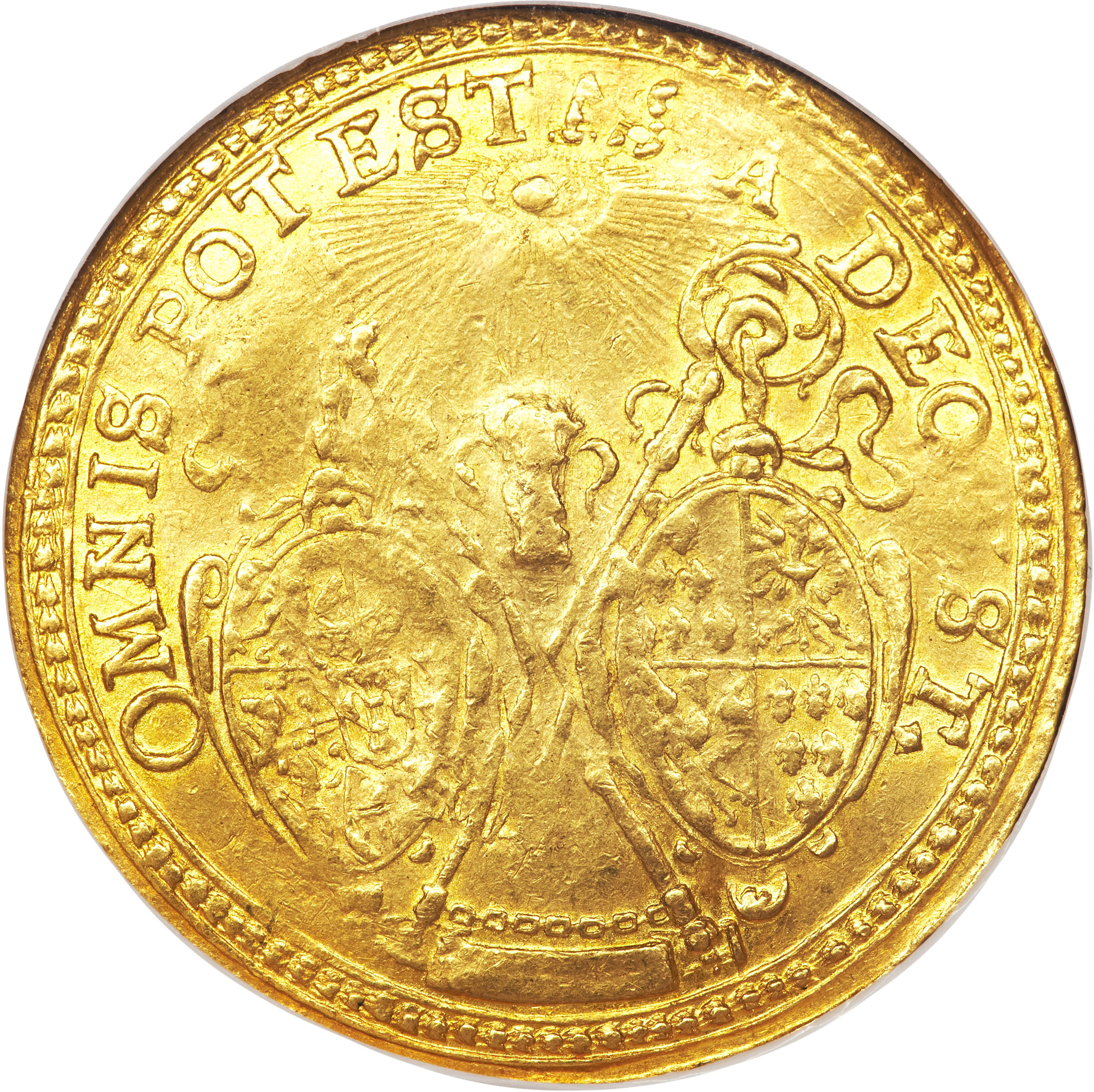Breslau, Bishopric of 10 Ducats - Charles Ferdinand Vasa
Introduction
The 10 Ducats Charles Ferdinand Vasa gold coin, minted in 1639 by the Bishopric of Breslau, holds a significant place in numismatic history. This exquisite coin is a testament to the artistic prowess and historical importance of the era.
Historical Background
The Bishopric of Breslau, located in present-day Poland, issued the 10 Ducats coin in 1639 during the reign of Charles Ferdinand Vasa. This period marked a time of political and cultural significance in Europe, reflected in the coinage of the era.
Coin Images
 Obverse
Obverse
 Reverse
Reverse
Design Features
The obverse of the coin showcases a detailed portrait of Charles Ferdinand Vasa, adorned with intricate regal attire and a dignified expression. The reverse side features the coat of arms of the Bishopric of Breslau, intricately crafted with symbolic elements representing the region's heritage and authority.
Technical Specifications
This coin, struck in gold, weighs 34.59g and has a diameter of 44.00mm. The flawless craftsmanship and precise specifications make it a coveted piece among collectors and enthusiasts of historic coinage.
Collectible Value
The 10 Ducats Charles Ferdinand Vasa coin holds immense value in the numismatic world. Its historical significance, coupled with its rarity and exquisite design, make it a prized addition to any collection. Collectors are drawn to its beauty and the story it tells of a bygone era.
Conclusion
In conclusion, the 10 Ducats Charles Ferdinand Vasa gold coin from the Bishopric of Breslau is a treasure trove of history and artistry. Its remarkable design, historical importance, and scarcity elevate it to a coveted piece in the world of coin collecting. Owning this coin not only adds value to a collection but also offers a glimpse into the rich cultural tapestry of the past.

